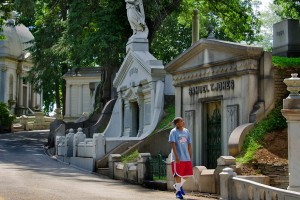Features: The Warren Commission, The Truth, and Arlen Specter: Part 1
The Commission concluded that three shots were fired: Two were hits, one a complete miss. The number of shots reportedly heard by witnesses ranged from two to more than eight. The Commission based its conclusion chiefly on the fact that three empty shells were found on the sixth floor of the Depository, Given this assumption and the timing of the shots – the fatal head hit was definitely recorded on Zap ruder film frame 313 — evidence of more than three shots or of bullets coming from a direction other than the Depository would indicate the presence of at least one more assassin.
If a separate shot hit the Governor between the first and last hits on the President, the shots would have had to be evenly spaced within less than six seconds. But the Commission Report itself points out: ". . . a substantial majority of the witnesses stated that the shots were not evenly spaced. Most witnesses recalled that the second and third shots were bunched together."
Mr. Specter: In your view, which bullet caused the injury to your chest, Governor Connally? Governor Connally: The second one.
Mr. Specter: And what is your reason for that conclusion, sir?
Governor Connally: Well, in my judgment, it just couldn’t conceivably have been the first one because I heard the sound of the shot . . . and after I heard that shot, I had the time to turn to my right, and start to turn to my left before I felt anything. It is not conceivable to me that I could have been hit by the first bullet. . . .
A close analysis of the Zapruder film, frame by frame in the National Archives, reveals this: As the Presidential car begins to pass from view behind a road sign about frame 185, the President is waving with his right hand and smiling. Less than a second-and-a-half later, at frame 207, the car is completely behind the road sign but the President’s face is still visible above it. (Frames 208 through 211 are cut from the Archive film and not printed in the Volumes of exhibits. Specter expressed surprise at ,this and could not explain it, though roughly one out of three Commission documents are still classified and not available to researchers.) As Connally comes back into view on frame 222, there is no indication he has been hit, yet it is obvious that Kennedy has begun to clutch at his throat on frame 225. By frame 235, Connally has begun to turn to his right, against — according to the Commission — the force of the bullet which had already shattered his right fifth rib, smashed his right wrist and punctured his left thigh. Yet there is no indication that Connally is hit until frame 292, when he begins to fall back into his wife’s lap, about four seconds after the bullet supposedly hit him.
"You can’t tell from the films when Connally was hit," says Specter, "you just can’t tell. What you have on the Zapruder film is, naturally, two dimensional. The Governor is turning around and at some point he’s hit. There’s the question of reaction time. But I watched and the Governor watched those films .," — which, by the way, was fascinating to see; that is, his response as he watched that film for the first time when he was at the Commission the day he testified – and even he can’t tell exactly when he was hit, you know."
The fact remains that Connally testified that he was hit after he heard the first shot fired. Mrs. Connally also said she saw her husband hit after the first shot was fired. The Commission ignored both their testimony.
"But, you see, the lapse of time and the reactions is only one indicator," explained Specter. "We have other substantial indicators. For example, the angles. Connally took off his shirt for the Commission and we looked at his wound on his back and we looked at it on the front. His surgeon actually put a caliper up, so we had an indication of the angle of decline of the wound. We also had an indication of the angle of decline on the President, though it’s not precise because we do not know the exact location of the wound in the front of the throat because it was cut away in the tracheotomy. But those factors, as best we can tell, show an angle of elevation just like the Oswald shot."
The wound in Connally’s chest had an angle of decline of about 25 degrees, measuring from the point of entrance to the point of exit at his right nipple.
There was no way of accurately ascertaining the angle of Kennedy’s neck wound, assuming it exited from the front, because the doctors at Parkland used it as a point for the tracheotomy. So the angle was deduced from the re-construction of the assassination, which Specter indicates was a very important factor in the Commission’s conclusions.
The idea to stage a re-construction was Specter’s. Commission members were reportedly not in favor of it, perhaps because it was already late in May and a
1st deadline had been set for the first drafts of the reports. Specter convinced Rankin and Redlich that a reconstruction would be helpful. The Mannlicher-Carcano was up in the sixth-floor window of the Depository and camera attached to its scope. The Secret Service’s follow-up Cadillac had to be used because the Presidential LincoIn was being overhauled. Then, using the Zapruder film as a reference, the event was re-enacted frame by frame.
A week later, Commission chairman Warren came to Dallas to see for himself. "I went through the thing," recalls Specter. "It was the only time I ever got the Chief Justice to sit still for a few minutes to listen. And he really listened to that. He didn’t say anything. He didn’t say anything, but I think he was persuaded on that."
Yet what did the re-construction really prove? Only that if someone was firing from the sixth-floor window of the Depository, there would have been a number times when Connally was sitting directly in front Kennedy in relation to the line of sight of the rifle. It was assumed that Kennedy was hit at frame 210. Given
the downward street grade, that would have made angle of Kennedy’s neck wound about 17.4 degrees inconsistent with the angle at Connally’s wounds.
"The difference," says the Commission Report, explained by either a slight deflection of the bullet by striking the fifth rib or the Governor’s leaning backward at the time he was struck." But there was proof for either contention, so the Commission finally had to admit, "The alignment of the points of entry only indicative and not conclusive that one bullet both men."


